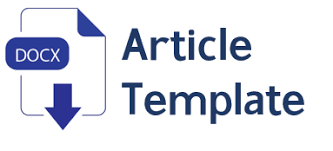Application of Role Playing in Fiction Story Material in an Effort to Increase Students Learning Activeness of grade V MIN 1 Ponorogo
Abstract
This research was motivated by the problem of students' need for more active learning in Indonesian language subjects. This is because teachers still use conventional learning models. As a result, teachers must encourage students' active involvement in the learning process and provide opportunities for students to express their understanding and skills effectively. Therefore, this problem needs to be corrected by implementing a role-playing model that is expected to increase student learning activity. This research aims to (1) describe the application of role-playing to fictional story material to increase the learning activity of class V MIN 1 Ponorogo students and (2) describe increasing the learning activity of class V MIN 1 Ponorogo students using the role-playing learning model. This research uses the Classroom Action Research method. The research results show that applying the role-playing model can increase students' active learning regarding fictional story material in Indonesian language subjects. In cycle I, student learning activity was 71.66%; in cycle II, student learning activity was 79.57%; and in cycle III, student learning activity was 90.83%. Thus, role-playing can increase the learning activity of class V Salahuddin Al-Ayubi's students on fiction story material in the Indonesian language subject at MIN 1 Ponorogo.
References
Fitriani, L., & Nurjamaludin, M. (2020). The Effectiveness of the Cooperative Integrated Reading and Composition (CIRC) Model in Enhancing Fictional Story Reading Comprehension Skills. Bale Aksara, Vol. 1 No., 35.
Hasbullah. (2010). Educational Autonomy. PT Rajawali Pers.
Kanza, N. R. F., Lesmono, A. D., & Widodo, H. M. (2020). Analysis of Student Learning Engagement Using the Project Based Learning Model with a STEM Approach in Physics Education for Elasticity Material in Grade XI Science 5 at State Senior High School 2 Jember. Physics Learning Journal, 9(2), 71. https://doi.org/10.19184/jpf.v9i1.17955
Mustika, D. (2022). Elementary School Science Learning Models and Their Applications (M. Deswita (ed.)). Mitra Cendikia Media.
Nana, S. (2016). Assessment of the Teaching and Learning Process Outcomes. Rosdikarya.
Nurgiyantoro, B. (2013). Theory of Fiction Analysis. Gajah Mada UniversityPress.
Saputri, R., & Yamin. (2022). The Influence of the Role Playing Learning Model on Fairy Tale Learning Outcomes in Elementary School Students. Jurnal Basicedu, Volume 6, 7276.
Uno, H. (2012). Learning Model. Bumi Aksara.
Uno, H. B. (2009). Teaching Model for Creating a Creative and Effective Learning Process. PT. Bumi Aksara.
Zulela. (2012). Elementary School Indonesian Language Learning: Literary Appreciation. PT. Remaja Rosdakarya.



